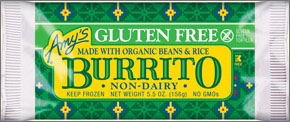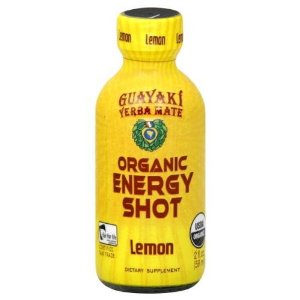
UTMB TRAINING: NUTRITION
Training for the UTMB isn’t just about physical and mental fitness. This post is about UTMB Training: Nutrition.
Over the years I have developed a nutrition strategy that supports the muscular and systemic training load. This can be broken down into three different components: routine nutrition, effort nutrition, and recovery nutrition. Routine nutrition is concerned with daily food intake (meals, snacks, hydration, supplements). Effort nutrition is implemented during long runs and races (fuel, supplements, and hydration). Recovery nutrition comes into play when effort has stopped and the body needs to repair and regenerate. One thing to remember is that there are no hard rules here. Nutrition needs to be tailored to genetic make-up, athletic level, and circumstances. In other words, my nutrition strategy is only specific to me but I do hope that the following points can help inspire many ultra athletes design their own strategy.
ROUTINE NUTRITION
The most striking quality of what I eat on a daily basis is that it is made of organic, non-GMO and non-processed foods. That’s it! That is where the dogma stops. This personal guideline is not only important for ultra-endurance performance but also for a healthy lifestyle. Our ecosystem has worked for thousands of years to provide us with nourishment and medicine. What about sweets then? Although I love to make desserts I limit my consumption of processed sugar to a minimum (maybe 3 times a week).
EAT FOOD FROM THE EARTH
I tend to not understand when I hear runners at all levels think that because they are active they can just eat what the hell they want! The human body and spirit is both strong and susceptible to toxins. Typically I eat lean proteins and vegetables and a huge amount of fruits. I have the meat usually come from Niman Ranch and the veggies and fruits delivered by Farm Fresh.

My lunch typically is a huge salad and I add carbs with Udi’s bread (I don’t consider myself gluten intolerant but I feel better when I avoid it). For pasta, I have been very happy with quinoa pasta. Regarding the raw and cold nature of the salads we tend to frown on them in Traditional Chinese Medicine but it’s warm here in California… (just providing an excuse!)
I tend to never deviate from my Nature’s Path instant oatmeal with berries for breakfast. Occasionally I like to have eggs, bacon, and hashbrowns but it’s mostly if someone else cooks it!
DON’T LOSE OR GAIN WEIGHT
My most difficult problem is actually retaining my healthy weight (152lbs – 69kg). Although I eat to my heart’s content I tend to lose weight due to a calorie shortage. I tend to not eat enough considering the level of exercise I do. I have finished long runs at 146 lbs (66kg) usually burning at least 1% of body fat which I need to regain. An odd problem in the middle of an obesity epidemic isn’t? My body carries very little fat (5 to 7%) and being underfat is just as unhealthy as being too fat (immune system needs fat).
I avoid gluten and refined sugars and I eat a lot of fruits and vegetables and those are filling but don’t bring enough calories. The solution is usually more beans, hummus, and cheese (side note about cheese: I never eat American processed cheese – I don’t even think it’s cheese. We have a couple of very nice artisan cheesemakers in California and that’s how local I’ll go. Otherwise, I stick with French cheese. It’s been made properly and still has great probiotic properties). Usually, I regain my healthy weight in one to two days. If not I’ll get tired, grumpy and training becomes harder.
WHAT ABOUT SUPPLEMENTS
Regarding the daily supplements that I take they include:
- a multivitamin (New Chapter Every Man’s One Daily),
- BCAAs (Branch Chain Amino Acids – they help with muscle repair and are essential because the body cannot make them from other compounds. They appear in natural products such as eggs and chicken meat but I limit my meat intake),
- Siberian Ginseng, Cordyceps, Spirulina and probiotics (everyone, in my opinion, should supplement with probiotics and STAY AWAY FROM NON-TOPICAL ANTIBIOTICS UNLESS IT’S A MATTER OF LIFE OR DEATH!).

WHAT ABOUT “CARB LOADING”?
Regarding pre-race or pre-long run nutrition I don’t believe in the carbo-loading habit. It’s very often that the first comment from someone talking with me about running will be: “So you must carbo-load like crazy”. Well no sorry I eat regular meals before a 50 mi or 100 mi run, maybe a regular serving of pasta. Carbo loading might make sense for marathon runners but not for ultra runners who need to fuel on the go. And even for a marathon runner too much food adds weight which limits speed.
Again, the question usually always reveals the attitude that because we run we can pig on food. I run because I like it. Not running to eat. I eat because I like it too! They are not 100% connected that way! I think the equation that some people use is just not healthy and twisted.
EFFORT NUTRITION
This is where things get a little more complicated. When I was just running road marathons I was relying exclusively on gels (GU, Cliff Gels – be aware that GU gels contain preservatives such as sodium benzoate – highly processed food). I now use Cliff Shot kinds (no caffeine) and Ginsting Honey gels (32g caffeine per gel – they finally removed the picture of Lance Armstrong from the packaging!). When on a long run I eat one of them every hour on the half-hour, on the other half-hour I eat a natural bar or a burrito. This way I get in over 400 calories an hour.
TYPES OF NUTRITION RUNS
Effort nutrition also requires training. It can be hard to swallow the necessary fuel when it’s hot or when the body is tired. I have three types of nutrition training runs. First regular runs: similar to race conditions and supply. Then gluttony runs: runs where I force feed myself to make my GI track learn to process foods into muscular fuel. And finally, fasting runs: where I’ll eat nothing before and will subside on 2 or 3 gels – this trains the body to burn fat more efficiently. This is not a recommended exercise if you are someone who is exercising to lose weight – I do it because I train at an ultra level of endurance.
NUTRITION ON THE GO
So what do I pack on those long runs and what do I put in my drop bags (for a training race for instance)? Again, as much natural and organic foods as possible. Recently I’ve started to pack vegetarian burritos, hummus and I eat Bobo oats bars, Bear Valley Meal Pack bars, Pro Bars or Nature’s Path bars which is my favorite (disclaimer: they support me but I did eat their wonderful organic non-GMO products before that!). If there are aids stations I eat more fruits but I stay away from the candy.
I don’t drink sports drinks such as Gatorade (couple of exceptions). They are processed foods. I stick to water (when running in the wilderness I take water from streams and I sterilize it with my Steripen). When a drop-bag is possible I include hummus or extra burritos. Not sure what I will include in the UTMB drop bag at Courmayeur (only one drop bag this year).
SUPPLEMENTS
Effort supplements are the following: Endurolytes (about one cap an hour depending on dehydration rate), BCAAs (one cap every two hours) and Sportenine (one tablet every two hours – I am in no way a doctor who is on board with homeopathy but maybe this is placebo and it works). As I mentioned in a previous article this mix (in conjunction with proper training) allowed me to run 60 miles in the high sierra, finish with fresh legs without muscle soreness the next day. I also carry a Guayaki Energy shot in case of great fatigue but I try to limit caffeine – before I ingest the Guayaki shot (it’s potent!) I try to combat fatigue with the Bach Homeopathic Spray. Homeopathy won’t hurt anything except your wallet… sometimes it works – sometimes it doesn’t.
RECOVERY NUTRITION
I find it difficult to have a good recovery meal after a long run or a race. Over 12 or 24 hours the body has gotten used to burning fat and I’m usually not very hungry for an hour or so. I usually start with a smoothie with lot of berries. Then something that always opens my appetite: sushi! Then more of whatever is around. I eat until I feel satisfied. And I sleep.
CONCLUSION
I have found over the years (and after trying many processed ‘sport’ products) that the best fuel is natural fuel. I have used this guideline in my training and I’ve been very happy with it. Also, I feel I have managed to train myself better regarding eating on the run. I’m a bit anxious about the foods that will be available at the UTMB; 600kg of saucisson, 2600kg of Fromage, 10,000 bananas, 35,000 cereal bars, 5000 beer cans. 12000 liters of soup. Although it will be great French, Italian or Swiss stuff it’s not what I train with usually but it is pretty much what I eat in the mountains. I’m putting burritos in my bag – that’s for sure!
Related posts
- Video Summary – Race Report
- UTMB Training: Part1 – Volume & Intensity – Part 3 – The Gear – Part 4 – The Rest
- UTMB Newscast 1 – Newscast 2

